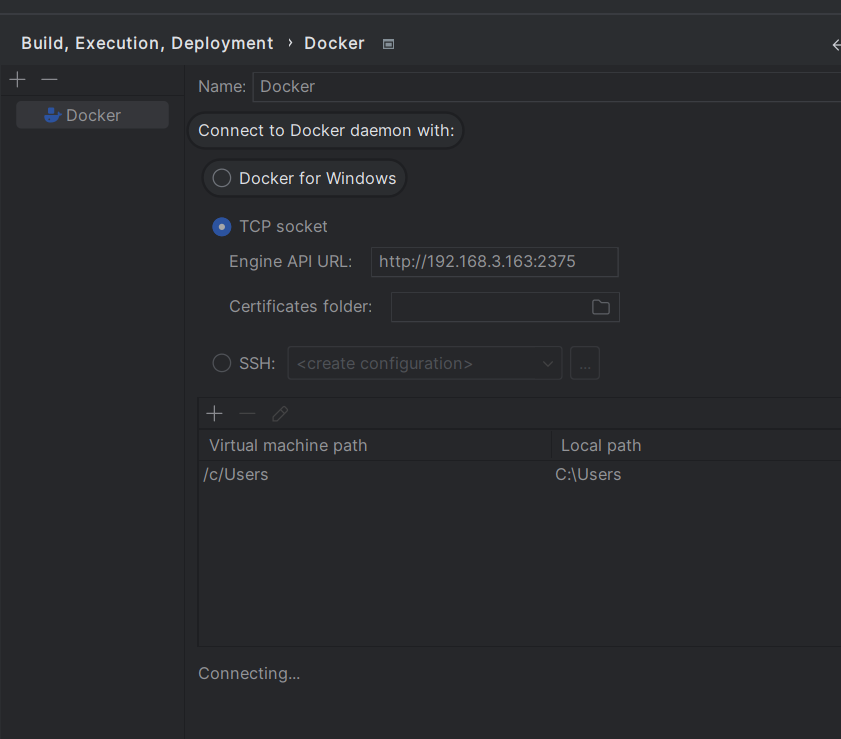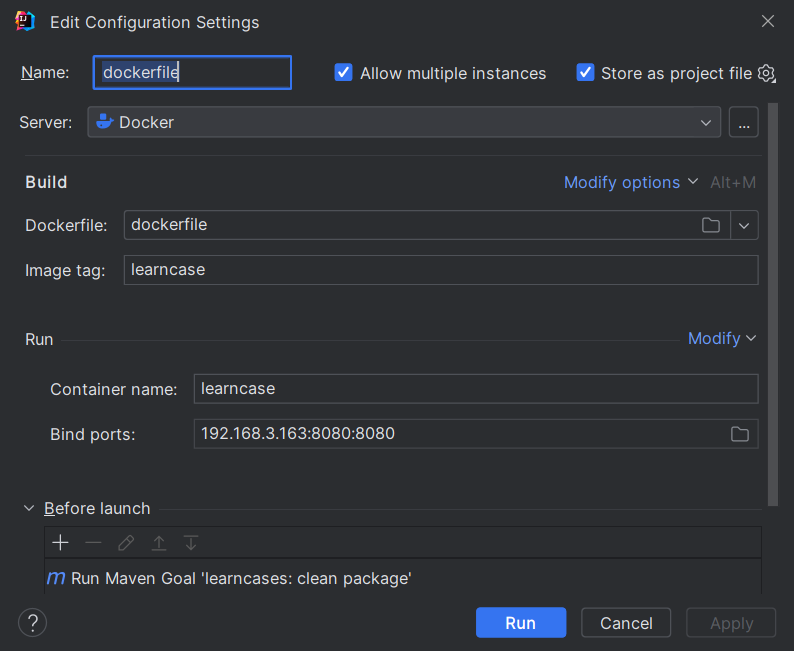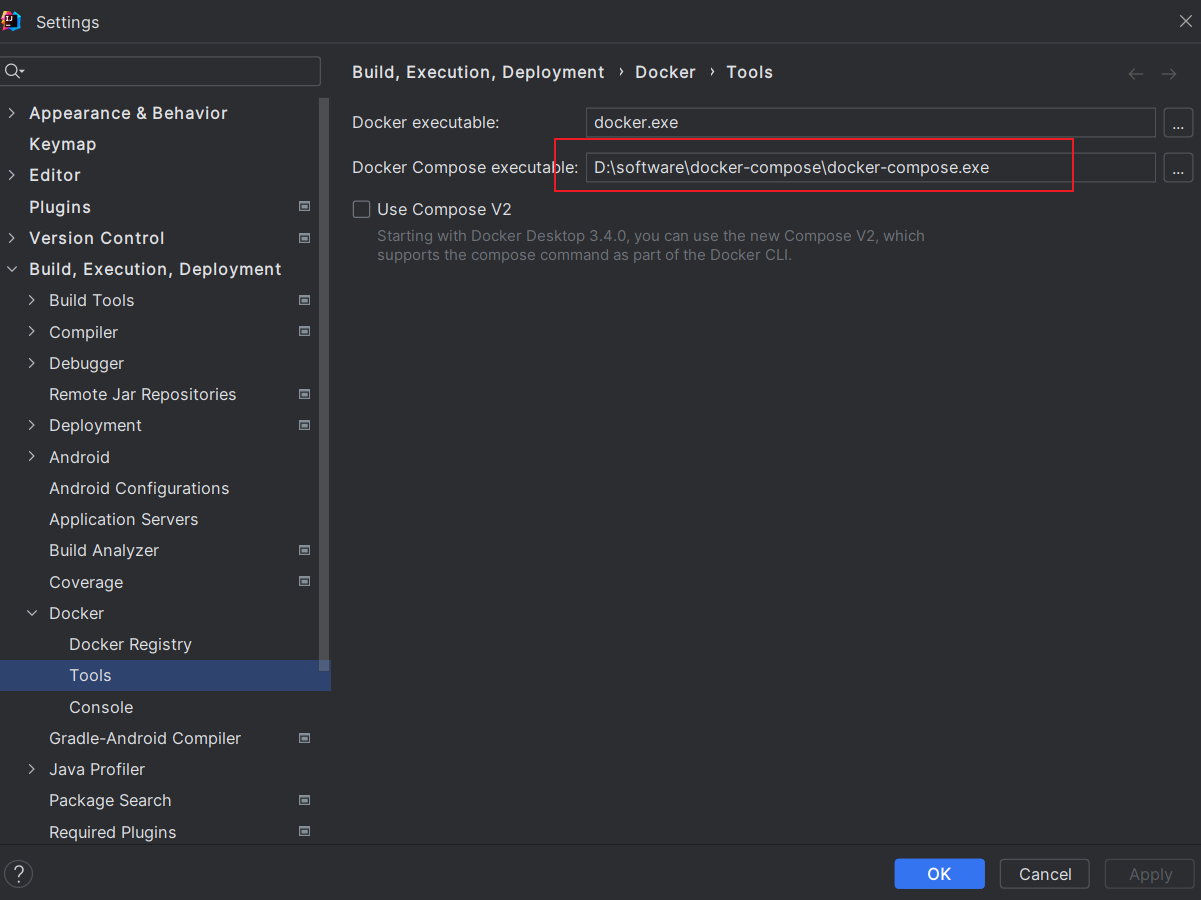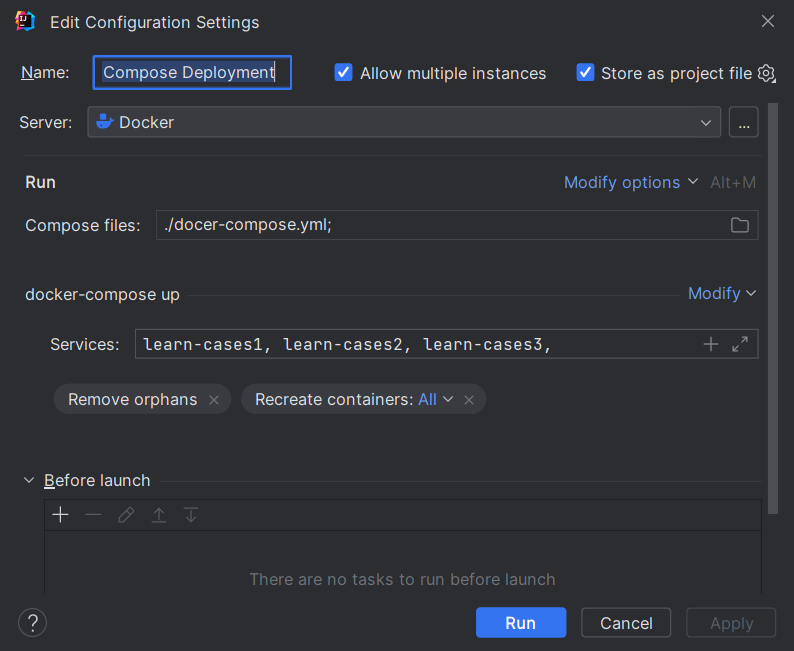idea使用docker部署
linux中docker配置
systemctl disable firewalld --now
setenforce 0
sed -i -r 's/SELINUX=[ep].*/SELINUX=disabled/g' /etc/selinux/config
swapoff -a
sed -i '/swap/s/^\(.*\)$/#\1/g' /etc/fstab
cat <<EOF > /usr/lib/systemd/system/docker.service
[Unit]
Description=Docker Application Container Engine
Documentation=https://docs.docker.com
After=network-online.target firewalld.service containerd.service
Wants=network-online.target
Requires=docker.socket containerd.service
[Service]
Type=notify
# the default is not to use systemd for cgroups because the delegate issues still
# exists and systemd currently does not support the cgroup feature set required
# for containers run by docker
ExecStart=/usr/bin/dockerd -H fd:// -H tcp://0.0.0.0:2375 -H unix://var/run/docker.sock --containerd=/run/containerd/containerd.sock
ExecReload=/bin/kill -s HUP $MAINPID
TimeoutSec=0
RestartSec=2
Restart=always
# Note that StartLimit* options were moved from "Service" to "Unit" in systemd 229.
# Both the old, and new location are accepted by systemd 229 and up, so using the old location
# to make them work for either version of systemd.
StartLimitBurst=3
# Note that StartLimitInterval was renamed to StartLimitIntervalSec in systemd 230.
# Both the old, and new name are accepted by systemd 230 and up, so using the old name to make
# this option work for either version of systemd.
StartLimitInterval=60s
# Having non-zero Limit*s causes performance problems due to accounting overhead
# in the kernel. We recommend using cgroups to do container-local accounting.
LimitNOFILE=infinity
LimitNPROC=infinity
LimitCORE=infinity
# Comment TasksMax if your systemd version does not support it.
# Only systemd 226 and above support this option.
TasksMax=infinity
# set delegate yes so that systemd does not reset the cgroups of docker containers
Delegate=yes
# kill only the docker process, not all processes in the cgroup
KillMode=process
OOMScoreAdjust=-500
[Install]
WantedBy=multi-user.target
EOF
IDEA 配置截图


DockerFile
FROM openjdk:8u342-jdk
WORKDIR /deployment
# 将当前目录下的jar包复制到docker容器的/目录下
ADD ./target/learncases-0.0.1-SNAPSHOT.jar app.jar
RUN jar -xvf app.jar && rm -f app.jar
# 声明服务运行在8080端口
EXPOSE 8080
# 指定docker容器启动时运行jar包
ENTRYPOINT ["java","-cp","/deployment","-DSpring.profiles.active=default","org.springframework.boot.loader.JarLauncher"]
dockerfile.run.xml
<component name="ProjectRunConfigurationManager">
<configuration default="false" name="dockerfile" type="docker-deploy" factoryName="dockerfile" editBeforeRun="true" singleton="false" server-name="Docker">
<deployment type="dockerfile">
<settings>
<option name="imageTag" value="learncase" />
<option name="containerName" value="learncase" />
<option name="portBindings">
<list>
<DockerPortBindingImpl>
<option name="containerPort" value="8080" />
<option name="hostIp" value="192.168.3.163" />
<option name="hostPort" value="8080" />
</DockerPortBindingImpl>
</list>
</option>
<option name="sourceFilePath" value="dockerfile" />
</settings>
</deployment>
<method v="2">
<option name="Maven.BeforeRunTask" enabled="true" file="$PROJECT_DIR$/pom.xml" goal="clean package" />
</method>
</configuration>
</component>
idea使用docker-compose部署
docker-compose.yml
version: '2'
services:
learn-cases1:
container_name: learn-cases1
build:
context: .
dockerfile: Dockerfile
image: learncase:latest
ports:
- "8080:8080"
learn-cases2:
container_name: learn-cases2
build:
context: .
dockerfile: Dockerfile
image: learncase:latest
# 外部端口8081 容器端口8080
ports:
- "8081:8080"
learn-cases3:
container_name: learn-cases3
build:
context: .
dockerfile: Dockerfile
image: learncase:latest
ports:
- "8082:8080"
下载docker-compose
配置Docker Compose executable 即可


注意部署时直接run 可能没有拉起三个contaner,这个时候可以先down 然后再deploy
访问
192.168.3.163:8080
